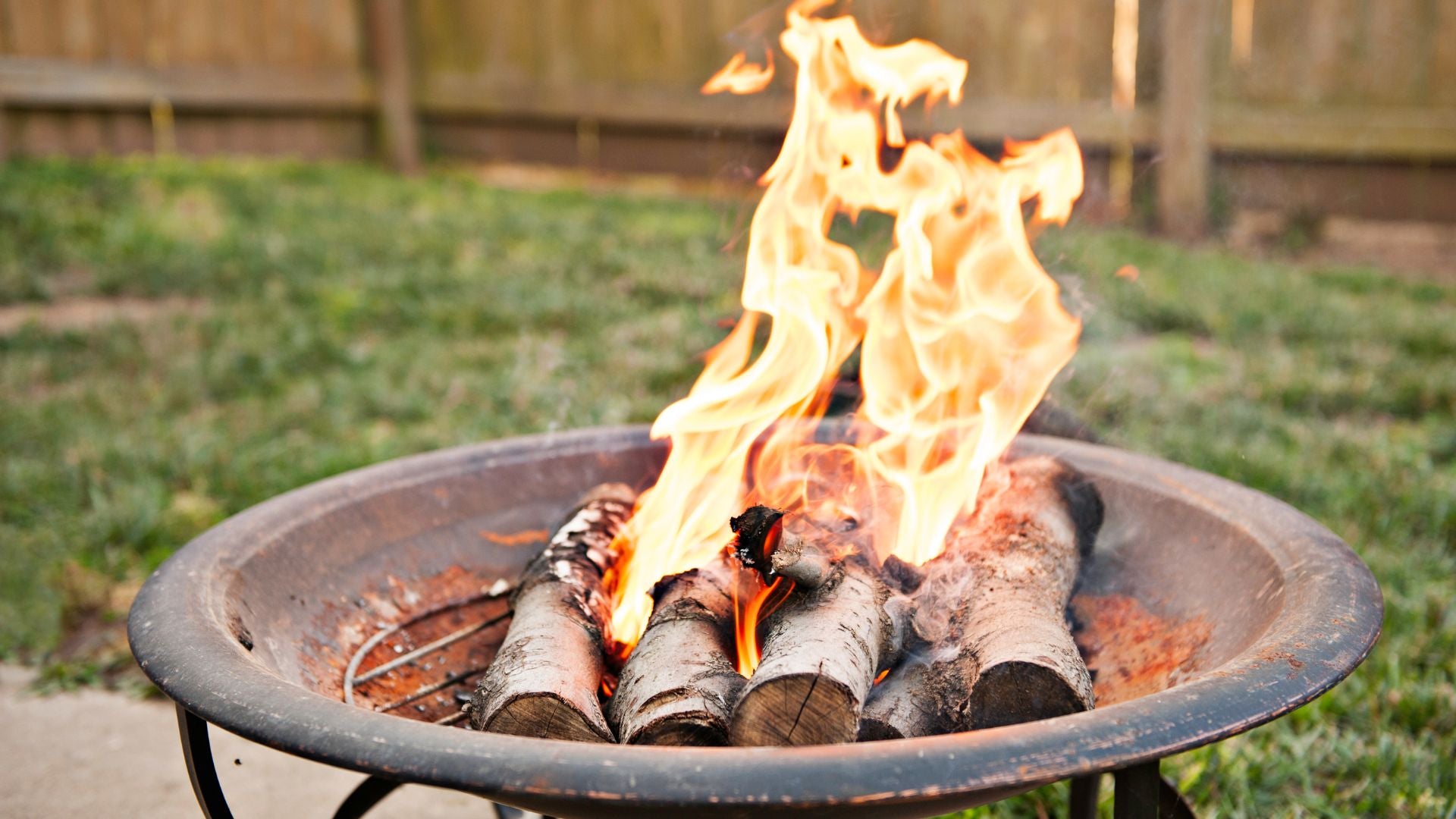Gathering around a crackling fire under a starry sky is one of life’s simple pleasures. Whether you’re toasting marshmallows with the kids, sharing stories with friends, or enjoying a quiet moment alone, an outdoor fire pit serves as a magical focal point. However, before you can bask in the warm glow of dancing flames, there’s an important decision to make: where to place your outdoor fire pits.
The fire pit location is more than just a matter of convenience; it’s a crucial element that affects the safety, functionality, and overall ambience of your outdoor gatherings. Today, we’ll guide you through the key considerations for choosing the perfect spot in your yard that maximises enjoyment while ensuring peace of mind.
Get ready to ignite your outdoor living space with the ideal backdrop for those fiery evenings!
How to Find the Right Location for an Outdoor Fire Pit
Creating a cosy and inviting outdoor space with a fire pit can transform your backyard into a year-round haven for relaxation and entertainment. However, finding the right spot for your fire pit is crucial for both safety and enjoyment. Here’s how to identify the perfect location to ensure your outdoor fires are safe and enjoyable for all.

1. Review Local Regulations and Safety Guidelines
Before setting up your fire pit, it’s imperative to familiarise yourself with local fire pit regulations. Some areas may have specific restrictions on the type of fire pit you can install, the materials you can burn, and the locations where a fire pit is permissible.
Additionally, there may be requirements for fire extinguisher equipment to be readily available. Always adhere to these regulations to ensure your fire pit is legal and safe.
2. Consider the Proximity to Your Home and Other Structures
Your fire pit should be a safe distance away from your home, garage, sheds, and any other structures that could be damaged by heat or stray sparks. The recommended distance is typically 10 to 20 feet, but always refer to local guidelines. This precaution safeguards your property and helps reduce any risk of carbon monoxide build-up.
3. Think About Wind Patterns
The direction of prevailing winds can greatly affect where you should place your fire pit. If you put it in a spot where the prevailing wind usually blows towards your home or seating area, you and your guests may end up inhaling smoke uncomfortably. Observe the wind patterns in your yard over several days to find the right fire pit location that will direct smoke away naturally.
4. Ensure Level Ground
For safety and stability, your fire pit needs to be on level ground to prevent it from tipping over or wobbling. If you don’t have a naturally flat space, you may need to do some landscaping. Use sand or gravel to create a level base, or consider having a concrete slab poured for a permanent location.
5. Evaluate Accessibility and Convenience
Think about how you and your guests will reach the fire pit. You’ll want a clear, safe path that’s easy to navigate in the dark or when carrying food and drinks. The fire pit should also be readily accessible for bringing in firewood and other supplies without it being a chore.

6. Select a Location with Good Drainage
To avoid your fire pit sitting in water after a rainstorm, choose a location with good natural drainage or plan to install adequate drainage solutions. Additionally, consider the type of foundation you’ll use — gravel and sand are excellent choices for facilitating drainage.
7. Consider Privacy and Views
The location of your fire pit can impact the privacy of your gathering and the views you and your guests will enjoy. Consider placing your fire pit in a spot not directly in view from neighbours’ windows, and think about the vistas from the fire pit itself. A good view can greatly enhance the experience.
8. Account for Seating and Entertaining Spaces
Your fire pit area should include ample space for seating and moving around comfortably. When planning the layout, consider how the chairs will be arranged and ensure there’s enough room for people to sit and walk around without being too close to the heat.
9. Material and Type of Fire Pit
The type of fire pit you choose — whether it’s a permanent installation made of stone or brick or a portable metal model — can influence the best location. Permanent fire pits often become the focal point of a yard, while portable ones offer more flexibility. Also, consider the fuel source; wood-burning fire pits require a supply of firewood, whereas gas fire pits or propane fire pits need a line or tank installed.
10. Check for Overhead Clearance
It’s essential to ensure there is no overhead obstruction like tree branches, power lines, or overhanging roofs where you plan to place your fire pit. Not only does this prevent potential fire hazards, but it also helps with smoke dissipation.
11. Consider Aesthetics
Your fire pit should complement the overall design of your outdoor space. Whether you’re going for a rustic look with natural stone or a sleek modern design with metal and geometric lines, make sure the fire pit looks like an integral part of your backyard.

12. Plan for Maintenance and Upkeep
Finally, consider the maintenance requirements when choosing the location for your fire pit. Ensure that the area is accessible for cleaning and far enough from plants and structures to make it easier to sweep up ashes and debris. Regular maintenance will keep your fire pit safe and enjoyable for years to come.
Blaze a Trail to the Ideal Spot
In wrapping up our journey to pinpoint the ideal location for your outdoor fire pit, remember that this cosy addition to your home is more than a mere accessory—it’s a future hub of cherished memories and a warm beacon for social gatherings. By weighing the factors of safety, local fire department regulations, convenience, and personal aesthetics, you’re on track to create an inviting atmosphere that complements your home and garden.
Garden Depot is here to help you turn that vision into a reality. Our comprehensive services provide everything from consultation on fire pit placement to a wide selection of fire pit designs and installation services. We understand the nuances of creating a fire pit and an experience that extends the comfort of your home into the great outdoors.
If you’re ready to elevate your backyard fire pit into a year-round retreat with the perfect fire pit, or if you have any questions about our products and services, don’t hesitate to reach out to us. Our team at Garden Depot is dedicated to helping you every step of the way, ensuring that when the stars come out, you’ll only need to worry about who’s bringing the marshmallows.
Contact Garden Depot today, and let’s turn your dream of an ideal outdoor fire pit space into a glowing reality.
FAQs
How far should my fire pit be from my house or other structures?
As a general rule of thumb, fire pits should be placed at least 10 to 20 feet away from any structures, including your house, sheds, garages, and fences. This helps ensure embers or sparks don’t pose a risk to property.
Do I need a permit to install an outdoor fire pit?
A permit may be required to install an outdoor fire pit in many areas. It’s important to check with your local municipality or county for specific regulations and obtain any necessary permits before installation.
Can I place my fire pit on a wooden deck or grass?
Placing a fire pit directly on a wooden deck, grass, or any flammable surface is not recommended due to the fire risk. Using a fire-resistant base such as concrete, stone, brick, or gravel is best. For decks, specially designed fire pit pads are available to protect the wood.
What is the best surface to put under a fire pit?
The best surface under a fire pit is non-flammable and heat resistant, such as pavers, bricks, stone, or concrete. Some people also use gravel or sand for added stability and drainage.
How do I determine the wind direction and its impact on my fire pit’s location?
You can determine prevailing wind directions by observing the movement of leaves or flags over several days. Alternatively, you can check local weather data. Place your fire pit where smoke is less likely to blow towards your house or seating area.
What considerations should I make for seating around the fire pit?
Ensure there’s enough space for seating that allows for comfortable movement and is positioned far enough from the fire to be safe from sparks and heat. The seating should also be arranged to facilitate conversation and provide unobstructed views.
Can trees be near my fire pit?
Trees should be at a safe distance from your fire pit to prevent the risk of branches catching fire. This includes both overhead branches and any within a 10 to 20-foot radius around the pit.
How do I manage smoke from my wood-burning fire pit to avoid bothering my neighbours?
To minimise smoke, burn only dry, seasoned wood and consider the wind direction when using your new fire pit. If smoke is a significant concern, gas-burning fire pits or propane fire pits might be a better option as they produce minimal smoke.
Can I have a fire pit in a small backyard?
Yes, you can have a fire pit in a small backyard, but choosing a size and design that fits comfortably within the space while maintaining safe distances from all structures and boundaries is crucial.
Are portable fire pits a good option if I can’t decide on a location?
A portable fire pit offers flexibility and can be moved to different locations based on your needs or changing conditions. However, even portable fire pits require a safe, non-flammable surface and should be used following the same fire pit safety considerations as permanent ones.

